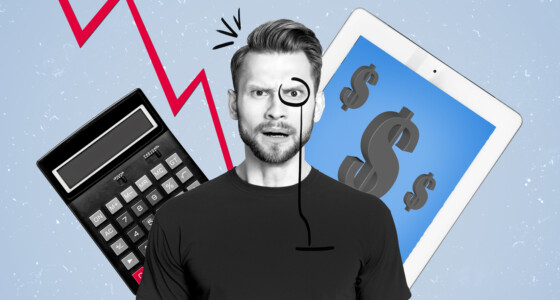

This article is a quick guide to an IPO. We will also tell you what the full form of an IPO is, whether it is worth investing in it and what alternatives exist.
What is an initial public offering (IPO)?
The IPO’s full form in banking and the market are the same and is Initial Public Offering. IPO is the process of issuing new shares of stock for a corporation.
A private firm can go public through an initial public offering by selling its stocks to the general public. A company that decides to list on an exchange could be brand-new, young, or elderly.
With the aid of an IPO, businesses can raise equity capital by issuing new shares to the public or by selling current ones to the public without generating any more funds. Companies typically issue an IPO to raise money to pay off debts, fund growth initiatives, increase their public profile, or any of these purposes. Company top officials may use it to expand their holdings or generate liquidity by selling all or a part of their private shares as part of the public offering.
A company that decides to “go public” selects a leading investor to help register securities and distribute shares to the general public. The lead issuer then brings together a syndicate of investment banks and broker-dealers to handle the sale of IPO shares to institutional and retail investors.
How does an IPO work?
An organization is regarded as private before an IPO. It has expanded with a few owners, including early investors like the founders, relatives, and colleagues, as well as qualified investors like venture capitalists or angel investors.
A company taking part in an IPO is taking a big step because it opens the possibility of significant capital raising. As a result, it increases the firm’s capacity for development and growth. Additionally, the enhanced transparency and trustworthiness of the share listing may help it get better terms when looking for borrowed money.
Most businesses find it tough to handle going public independently since it is a complicated, time-consuming procedure. A private firm considering an IPO must not only get ready for a higher level of public attention but also submit a ton of paperwork and financial reports to comply with the Securities and Exchange Commission’s (SEC) rules governing public corporations.
For this reason, a private company planning to go public hires an underwriter, typically an investment bank, to provide advice and assist in helping it set an opening price. In addition, underwriters assist management in preparing for an IPO by organizing roadshows and drafting necessary documentation for investors.
To ensure the wide distribution of the new IPO shares, the underwriter arranges a syndicate of investment banking firms. Each investment banking firm in this syndicate will distribute a percentage of the shares.
The underwriter issues shares to investors once the firm and its advisors have decided on an initial price for the IPO. The company’s stock then starts trading on a public stock market like the New York Stock Exchange (NYSE) or the Nasdaq.
History of IPOs
The history of IPO dates back to the 17th century. Early in the 1600s, shares of the Dutch East India Company were likely offered to Dutch citizens, marking the beginning of the modern IPO.
The idea of publicly trading a firm’s shares dates back to the United States. The Bank of New York and the First Bank of the United States were among the first American companies to go public in 1792 when the NYSE was founded.
The development of various communications technologies occurred along with the growth of the stock markets in the 20th century. These include the phone, the internet, and the stock ticker telegraph.
Technology IPOs increased dramatically during the dotcom boom of the late 1990s. It included eBay in 1998 and Amazon in 1997, with their shares initially trading at $18 each. Unfortunately, the dot-com era also saw several extensive initial public offerings for businesses that ultimately failed.
The number of IPOs over any given period may vary for various reasons, and it always will. For example, there are typically more initial public offerings when the economy grows because investors are more upbeat and prepared to participate. However, the opposite is frequently true during periods of high inflation, slow economic expansion, or other factors affecting macroeconomic stability and investor sentiment toward IPOs.

What is the IPO process?
An IPO (the process of issuing new stocks for a firm) is the same in India, America, and any other country. A business that wishes to go public will either make a public statement to attract interest or ask underwriters for confidential bids.
In the second case, the corporation may jointly select one or more underwriters to supervise certain phases of the IPO process. The underwriters handle every stage, including due diligence, document preparation and filing, marketing, and stock issuance.
Steps to an IPO
Let’s take a look at the steps a company needs to go through to go public:
- Hiring an underwriter
The company will seek the assistance of financial professionals, such as investment banks, to begin the initial public offering process. The underwriters provide the company with assurances on the funding raised and serve as go-betweens for the company and its investors.
- Incorporating an IPO
The draft prospectus, also known as the Red Herring Prospectus, and registration statement are prepared as part of this step.
- SEBI confirmation
The market regulator, SEBI, confirms the company’s disclosure of the facts. The business may reveal a date for its IPO after the application is accepted.
- Making s stock exchange application
Now that the company is ready to float its maiden issue, it must apply for the stock exchange.
- Marketing promotions
It is the stage of marketing and promotion aimed at attracting potential investors. The corporation tries to generate interest in the market before an IPO opens to the general public. In addition, the company’s leaders and employees will spread the word about the upcoming IPO around the nation over two weeks.
- Setting the price of the IPO
Now, the company has two options for starting the pricing of its IPO: a fixed-price offering or a book-binding offering. In a fixed-price offering, the cost of the company’s shares is disclosed upfront.
- Distribution of shares
The company will decide how many shares to allot to each investor, along with the underwriters. The bidders are typically assigned the IPO stocks within ten working days after the final bid date. The listing time of IPO is from 9:55 AM – 10:00 AM to facilitate the transition between call auction in pre-open and the continuous trading session.
Advantages and disadvantages of an IPO
Once a company is listed, it has several ways to issue more common shares, one of which is through a follow-on offering. This approach provides money for various corporate needs through equity issuance without taking on any debt. Many businesses desire to go public because of their ability to raise potentially substantial amounts of capital quickly.
An IPO provides the formerly private company with several advantages:
- Diversifying and expanding the equity base.
- Enabling more affordable capital access.
- Increasing recognition, status, and goodwill.
- Attracting and keeping better personnel using liquid equity participation.
- Facilitating purchases (potentially in return for shares of stock).
- Generating various funding options, such as equity, convertible debt, more affordable bank loans, etc.
Completing an IPO has several disadvantages, including:
- Significant and largely ongoing legal, accounting, and marketing expenses.
- Publication of financial and company data is required.
- Management must commit meaningful time, effort, and attention.
- Information that may be valuable to suppliers and rivals is available to the public.
- Problems with the agency are growing, and losing control due to new shareholders.
- Increased the risk of lawsuits, including shareholder derivative lawsuits and private securities class actions.
IPO alternatives
In addition to a public offering, there are several alternatives that companies should explore:
- SPAC
A publicly listed buyout company known as a special purpose acquisition company (SPAC) obtains money through an initial public offering to acquire or take control of a business. The SPAC typically has two years to buy one or more enterprises after becoming public. A business acquired by a SPAC goes public without paying for an IPO. Before the target company is involved, all fees and underwriting expenses have been paid.
The primary difference between SPAC and IPO price valuation can be attributed to opposing perspectives on how long each firm has been in business. SPACs’ prices can be established much more quickly because they cannot be sold as frequently or to as many people as IPO shares, but they also lose out on some of the IPO’s growth potential.
- Direct Listing
A private firm can go public by a direct listing, sometimes referred to as a direct public offering, in which shares are sold to investors directly on stock markets. The SEC introduced it in 2020 to allow corporations to raise additional capital when going public via direct public offering instead of listing existing shares. Slack and Spotify are well-known businesses that have gone public through natural listings. Recently, Squarespace also submitted paperwork to list directly on the New York Stock Exchange and go public.
Investing in an IPO
It’s essential to avoid falling victim to the excitement surrounding a firm if you’re considering investing in an IPO. So many businesses have launched with big hopes, only to fail within a few years.
During the technology stock market boom and crash in the late 1990s and early 2000s, investors became increasingly aware of these risks while investing. As a result, the US stock market witnessed pure speculation, during which some investors made excellent returns on their IPO investments. In contrast, others suffered significant losses due to the sharp decline in the value of shares of various technology companies.
Do your research before investing. Due to the lack of publicly accessible public information about a corporation issuing stock for the first time, this process may be complex. But it would help if you always referred to the firm’s prospectus.
Performance of IPOs
Some stocks may show the highest percentage gains the issuing business has seen on the first day it trades on the open markets. New money entering the stock market excites investors, and if the prospects for an IPO look promising, that makes for an even bigger splash on the first day. However, despite this boost, trading success in an IPO is influenced by several factors, including market circumstances, profitability in rival companies, and investor perception of the new issue.
A firm awaiting its IPO can decide to put the offering on hold if there are several of them and the performance of those stocks is poor. On the other side, more privately owned companies may elect to go public if investors welcome new business and the attitude surrounding the stock market is buoyant because previous IPOs performance has been profitable.
What is the purpose of an IPO?
The Firm can sell shares to the general public to help businesses raise more money. They could be used to finance business growth, R&D, or debt repayment. Other fundraising methods, such as bank loans, venture capitalists, and private investors, can be too expensive. In addition, companies can receive a ton of publicity by going public through an IPO. When companies want to go public, they often desire prestige and status, which may also enable them to negotiate better loan terms.
Also, going public may make it simpler or less expensive for a business to raise funds, but it also exacerbates other issues. It is necessary to disclose information, for example, by publishing quarterly and annual financial reports. In addition, companies must answer to the shareholders.
Can anybody invest in an IPO?
An IPO offers the public the opportunity to invest in and become a part of the development of a once-private firm. However, it can be speculative and risky investments by nature. Perhaps that is why investing directly in a well-known IPO is a rare opportunity for the average investor.
The general public can invest in a brand-new public corporation in two different ways. First, you can be given a chance to participate directly in the IPO if you are a client of an underwriter involved in the offering. Underwriters and dealers frequently provide their clients, including mutual funds, hedge funds, pension funds, insurance companies, and high-net-worth individuals, the majority of the shares in an IPO. You can buy the shares at the offering price in this situation.
The second option, which is more typical for private investors, is to buy the shares when resold on the open market days after the IPO. To purchase shares, an investor could submit an order to their broker.
Is an IPO a good investment?
An IPO is a significant achievement because it shows the firm has reached a point in its development where it can access the general market and raise money to expand its operations. However, it does not mean that you should invest in its IPO. Even a famous or well-known company can be a poor investment.
Investors need to know that a company issuing an IPO has no significant experience operating successfully in the public market. In addition, the level of competition may also impact an IPO’s performance. These and other elements might make the initial public offering less successful and make it harder for investors to make choices.
Keeping an eye on the IPO calendar and purchasing stock when a business goes public may seem like a simple approach for a prospective shareholder to get in early. However, just because a firm is getting good press doesn’t mean investing in it is wise.
Note! Before purchasing shares, it’s critical to comprehend the myths and potential opportunities surrounding investing in initial public offerings.
How is an IPO priced?
Companies considering going public consult with an investment bank to help them navigate the complex and expensive process. To guarantee the success of the IPO, an investment bank acting as the underwriter purchases part or all of the shares throughout the process.
Depending on the agreement they have with the firm, investment bankers can approach pricing in various ways:
- Pricing forecasts
To prepare the registration statement for the Securities and Exchange Commission (SEC), the pricing process begins with thoroughly examining the company. The prospectus, part of the registration statement’s first section, offers details on the company, the offering, and the management that are important to investors. It provides the SEC with additional information concerning the offering, including costs and charges.
- Publicly announcing the offer
The process of market promotion and accumulating non-binding bids for the shares is known as book building. The investment banking group starts it when the registration statement has been submitted. It contributes significantly to a successful offering because it gives the market input on the share price.
- Suggested offer price
The bankers use the indications of interest to determine the offering’s final price. The board of directors then authorizes the offering price after the legal team submits a request to the SEC. Shares are distributed to investors at the final offer price once the SEC declares the registration effective. On the day of listing, trading on the exchange starts.
General
When private companies try to draw attention to the business and raise the capital it requires to expand, IPOs can significantly impact them. However, the process is complicated, costly, and time-consuming.
Due to the potential rewards, investors like investing in initial public offerings, but it might be challenging to do so because not all brokers provide such an opportunity. In addition, it can be risky. Despite the potential profit, you should carefully consider whether or not to participate in an initial public offering. Selecting the best offer is difficult for an inexperienced investor, but in the case of the correct choice, IPOs could be the most crucial asset in the portfolio.












